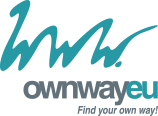Everybody should strive to accomplish their goals – without the exception of the services and tourism sectors. How to prepare a supply of services in order to attract potential customers? How to compile a product? We will guide you through the very steps of the product compilation for your resort, hotel or guesthouse. The key to success is information – the knowledge of the target group.
The preparation of product packages proceeds in several steps. How to compile products when you happen to be in the very beginning? If you have nothing to catch hold to, an in-depth analysis, preparation of multiple variations and finding an optimal solution is all you are left with. The process is not complicated. However, the optimal supply which would perfectly characterise your subject and would be predetermined for success in the competition cannot be made overnight.
7 Steps To Product Supply Compilation
1. Possibilities And Capacities
Anybody who is responsible for the supply preparation should be thoroughly familiar with the internal environment, processing and possibilities and capacities of his own company, so that he is aware of the range at his disposal. More precisely, so that he knows what can be offered to a customer and then 100% fulfilled. Importantly, the knowledge of the company environment should not paralyse you so much that you do not introduce any changes.
Practical example: There are always issues to improve. The bed capacity cannot be increased without investments; nevertheless, the quality of services may be changed by little things. Greetings, smile or friendliness are not taken for granted everywhere.
2. Market Analysis
The market analysis will provide you everything – almost everything. Information about clients, competition, region, purchasing power, trends in the field of interest, supply and demand. Nowadays, there is plenty of information available via the Internet. One does not need to visit competitors in order to get to know what they offer; one does not need to collect brochures in order to find out prices of the competitors. Thanks to the Internet, one can acquire information about up-to-date trends. Notwithstanding that, there is a negative aspect about doing all this from the comfort of one’s work desk. There is a possibility that there is a growing competition in the neighbouring town and there is no sign of it on the web whatsoever. It is true that one can hire a professional agency for the market analysis. Nonetheless, even their results do not secure the correct path for you. Importantly, you must be aware of risks which could threaten your goals and be prepared for the unexpected. The level of confidence and vision of success must be greater than your concerns.
Practical example: A foreign company had had a detailed market analysis done two years before entering the Czech market. This analysis had revealed a great demand for given products and had spotted a hole in the market. However, the company struggled after its launch, especially with the rise in prices of raw materials and the inability to break through because of distinct mentality of the Czechs. After two years, their loss business has been terminated... how trivial.
3. Definition of Target Group
Are we familiar and do we know? Do we know who will be interested in our services? The definition of target group can be determined by various aspects, for instance geographic, socioeconomic, demographic etc. The more precise your definition, the better the compilation of products made to custom. Target group is also the starting point for communication campaigns. Mutual harmony leads to maximum success:

Legal aspects of insolvency and reorganization

The Real | Interim Manager for Your Changes

Manager work model
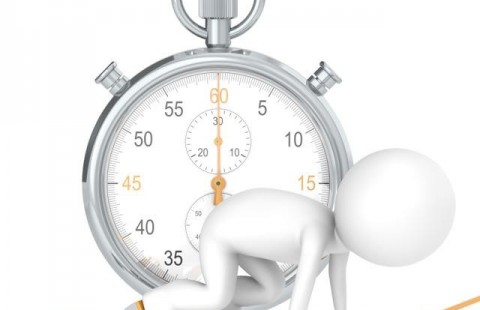
Time management - making use of time effectively
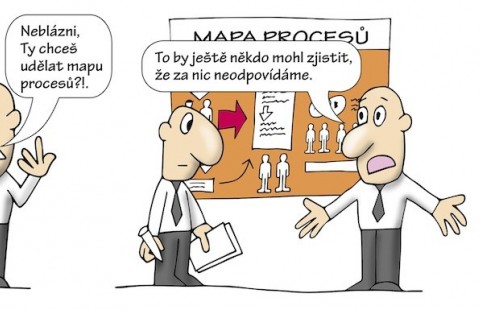
Jak správně tvořit mapu procesů

Modelling and setting the processes and procedures - ISO 9001
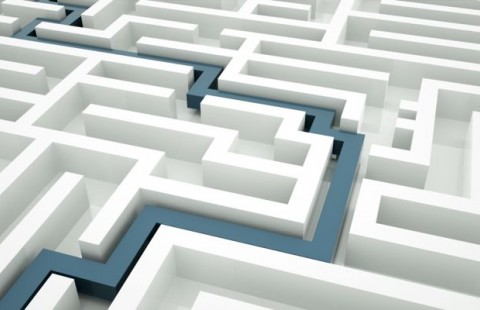
Training - preparation of the SWOT analysis and strategy
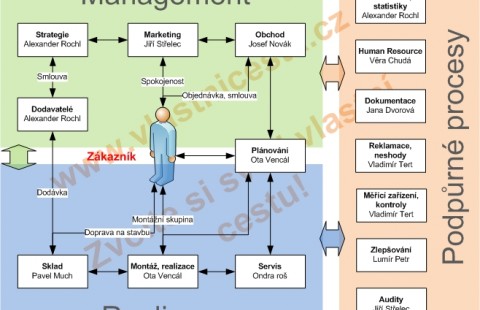
Company Management System of Quality Step by Step - ISO 9001
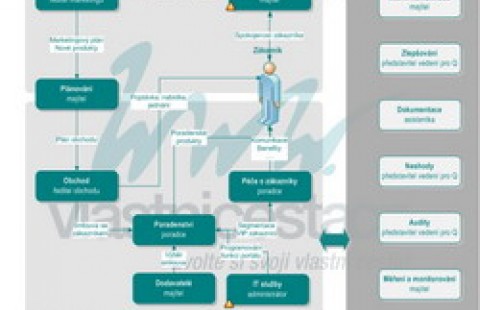
Process map acc ISO 9001 - business offer
target group → product → communication campaign → target group → sales
The best opportunity to address those who are interested is via knowing precisely the target group. To supply there where is demand. Needs, expectations and requirements of the target group play the essential role.
Practical example: Spa, well-being, healthy lifestyle, prevention. It is logical that you come up with a product package combined with these catchwords. You incorporate active elements such as workout, yoga, reduction diet into the stay... but the feedback is poor and marketability is very low. Why? There is information missing about the real needs of the target group. Even though physical activities undoubtedly belong among the alpha and omega of the healthy lifestyle, they are not the primary needs during a spa stay selection. The real primary needs of spa customers is to be taken care of, to relax and rest.
4. Product Compilation
If you have taken the previous steps, you should have a plethora of information as a basis for preparation of products. Define the structure beforehand – what kind of product you wish to have prepared and which price range this product falls into. For example, adding a balloon flight into a product worth 3.000 CZK also influences its sale price. Still, keep in mind the main focus of your subject and the needs of the target group. For instance: spa – health care, relaxation, resting; mountain hotel or chalet – tourism, skiing; guesthouse – cheap holiday, recreation, exploring the local area...
The structure does not necessarily have to be the same in all products – you can combine: accommodation + food + custom services (procedures, swimming pool, wellness, cosmetics...) + extra services. You can arrange a ticket, a discount or a tasting of a local product after making agreements with local business subjects. The addition of services of a partner generates a synergic effect and thus you broaden your communication channels. Interchange web links and advertising material with your partner and extend your clientele. Importantly, do be creative and make an aura for your product which can bring it up with respect to marketability. It is not essential to come up with something completely new at any cost. The stable clientele, comprising about 70% of the overall clientele, will return again simply because your supply met their expectations. An extra attention or a “loyalty bonus” will greatly please them. However, if you completely alter the product or you leave it out, you may easily lose your clientele.
Practical example: Being trendy bears fruit, but you have to catch the trend in time. A good example is a wellness centre which became an innovation few years ago. The expected sale rate of luxury stays was expected to be about 10%. However, it became an especially successful boom due to the wellness trend. What was so special about it? It was trendy, it caught the wave of wellness exploration, media boom and needs of customers. Nowadays, there is a wellness centre at every corner. Of course, creating a trendy product is not sufficient – you must also provide quality pro-clientele service with pleasant staff.
5. Team Cooperation
If you have your rough documentation prepared for your future products, ask your colleagues to help you out when they are not carried out yet. It only depends on you how large of a working group you assemble. Try to always address people who are or will be involved. The result of the team cooperation should comprise a purposeful product which would be feasible within your company and which would best suit the needs of your target group.
Practical example: If you have plenty of experienced and pro-clientele motivated staff, you will gain not only relevant information about possibilities, but also allies for the case that your capacities would not suffice.
6. Sale Price
The calculation of the sale price of your product is a matter of your company. The knowledge of expenditures determines the lower boundary below which you cannot sink. It is only up to you what and of what quality will be included in those prices. If the total price seems too high, you have to think about supplementary components of the product – whether their presence is well-founded, whether there is not too many of them or whether there might be a way to get them cheaper... You ought to have an idea beforehand about the price range of the product. Neither too low, nor unreasonably high.
Practical example: Spa stays of the length of a week or longer lie in the price range around 10.000 CZK per person. The decision of the clients to spend such an amount of money for a stay with health care takes quite a while, certainly longer than a decision to buy a new brand of chocolate. However, feedback to the weekend stays is noticeably faster and occurs faster after the campaign launch. Not only is it the lower total price, but also the fact that clients will not have to take a vacation for a weekend which plays the vital role. You must take into account even that.
7. Communication
The process is not finished with the product compilation and the price determination. Importantly, it must be introduced to the target group. In other words, you have to prepare a communication campaign. Its extent will differ for a family guesthouse and for a hotel network with a marketing department and a budget of 100.000s CZK.
What is included in a communication campaign?
- Goal – what you want to accomplish
- Target group – who will be addressed
- Content – how the clients will be addressed
- Marketing mix – by what means and in which region
- Timing – in which season, when and how long the clients will be addressed
- Budget – how much it will cost you
- Evaluation – what impact was made and comparison with goals
Do not aim at low goals. However, be realistic and do not try to earn something from the market what simply cannot be earned. The increase in turnover by 100% can be set only if you have a real cracker which ensures that people will tear off your hands to have it. You have to know that it will be that much desired. The goal should correspond to the long-term strategy of the company. The time aspect should be taken into account here as well. Every product evolves and may be of varying length, sometimes it is a long way to go.
Practical example: Even if you come up with an amazing product, you cannot break through with a gap in the communication channel. An ordinary, common stay may have a high contribution to the marketability of products. Employees play the major role here. Their job becomes a routine over time. They do not like to change what they already know well – the easiest products and those which are sold quickly and without complicated explanations. If you want to introduce an innovation and put it really into practice (not just written down), you have to refresh all your information channels by which the product reaches a customer. Closely observe the entire process of communication. First, familiarise all employees with the new product, so that they have enough information and details to be able to answer pertinent questions. Motivate them to study the new product and gain experience with it. Then prioritise what you want to sell, and monitor, control and check.
Conclusion
Gather as much information about your target group as possible – about its structure, orientation and focus and behaviour. Define their real needs. Do not get discouraged by a short-term failure, since gaining a stable and complacent clientele requires time.
This article has been written based on my own experience from spa industry. The procedures and suggestions are applicable in the fields of services and tourism. More about author www.ysomarketing.cz.
